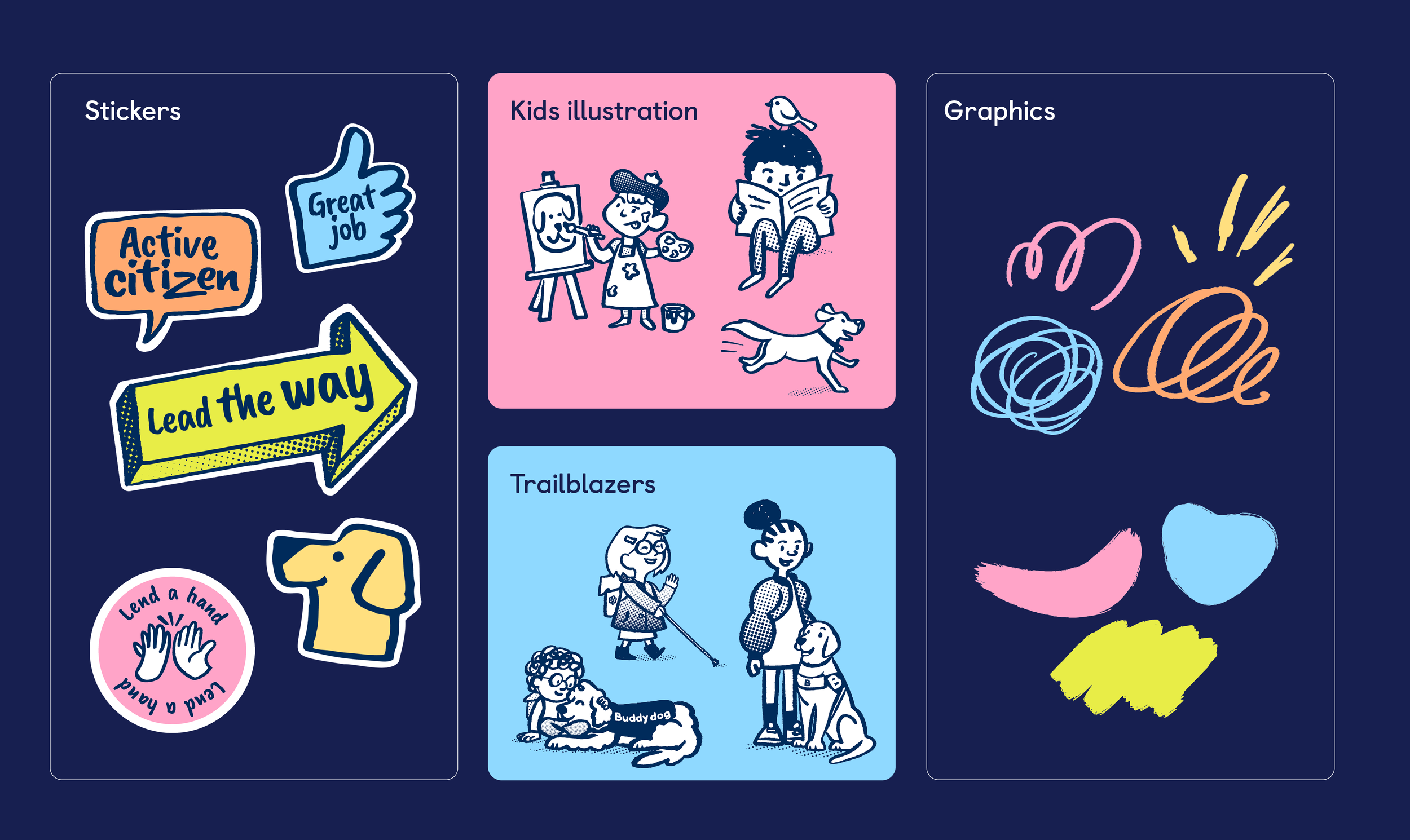How to produce a brand identity for kids
Guide Dogs has an incredibly strong brand (which we’ve helped develop over the years). So when this life-changing charity asked Lark to create a verbal and visual identity for its schools programme, we knew this needed careful handling. How do you flex an established brand identity like Guide Dogs? And how do you make it work for all ages, from tinies to teenagers?
Here are our top 5 lessons to help develop an authentic and strong brand identity for young people…
1. Start with “who”
Not rocket science, this one. Start by defining the audience(s) for whom you’re developing the brand. Try to zero in as much as you can: on age groups, settings, environments, and user journeys for your young audiences.
For this project, we knew the children would be using these resources in schools and youth groups, and that the Guide Dogs educational content largely follows UK school year splits:
Early years: 3-5yrs
Primary school: 5-11 yrs
Secondary: 11-18yrs
2. Find the golden thread
For a brand visual identity to grow with your young audiences, each stage needs to feel different, but also part of the same family. Hmn…
We stayed true to the core Guide Dogs colour palette and fonts – as they gave us sufficient flexibility and provided an essential link back to the core brand. To be honest, they’re pretty perfect for younger audiences anyway – it’s just about bringing them to life slightly differently. (While we’ve definitely added colours and fonts to core brand palettes, we often find that the core ingredients are already there, and it’s more about finding new kinds of application.)
Each of our initial ideas featured ‘golden thread’ visual devices that helped define and also link each age group – such as the way a textured pencil line for doodles and illustrations could be used for different age groups.
We split each visual approach into three core parts: photography, graphic devices, and illustration. This helped ensure that the whole visual language changed as the children grew, rather than just feeling like we’d tacked on something extra.
Top tip: Giving young people a mascot (or in our case, seven!) gives them a familiar face to engage with throughout a programme. Our Tailblazers squad each have names, personalities and back stories tied to the charity’s mission. We use them to hold signs on resource sheets, announce titles and CTAs, and direct the children through activities.
3. Find simple signifiers
Each of your audience groups will have universal traits or characteristics for you to push on to create their brand. Think ‘Brat summer green’ for Gen-Z.
Looking for inspiration? Look at how the style of animated kids’ shows grows with their audiences – from the very round, bright and playful shapes of the likes of Bluey and Peppa Pig, to the quirky, animé and realistic style for the older crowd.
In the early stages of the project we explored cookie cutter-inspired shapes, comic book-style panels, quirky speech bubbles, and many other options.
4. Keep it real
Creating a brand identity, or developing an existing one, usually involves lots of stakeholders, and lots of reviewing – especially when you’re working with a very established brand and some understandably cautious charity brand guardians.
We always find that seeing is believing. It’s impossible to know what will really work in practice until all the theory turns into something you can actually experience.
So instead of choosing generic covers or creative styles, we wanted to mock-up specific materials that we knew will definitely be needed.
In our case, resource creation was the follow-up part of our brief, so there weren’t any immediate Guide Dogs materials for us to reproduce. But the team did have a wishlist of materials in the pipeline that we could whip up.
5. Take time to test
The best way to see if your brand works? Test it with the people who’ll be using it. Run sessions with children, and (depending on how/where your brand will be shared) teachers, parents, siblings etc.
In our project, we hit-up the Miss Honeys and McGonagalls, running small focus groups with teachers and youth group leaders from across the UK.
The conversations helped reassure us on our approach, and steer major decision-making. It was during one of those sessions that we really landed on the final idea of the Tailblazers!
Wondering how to develop your brand? Come say hello@larkagency.com





